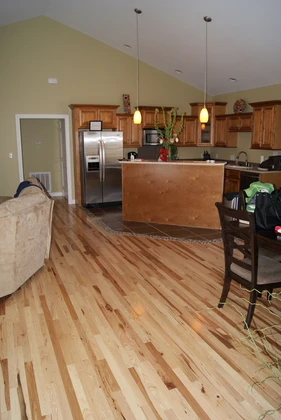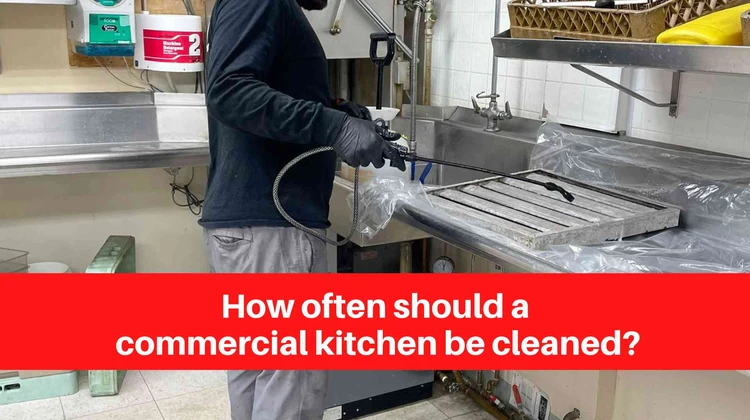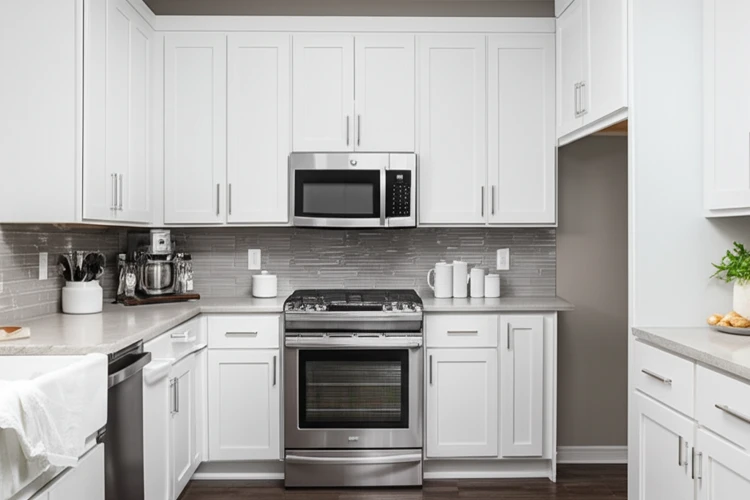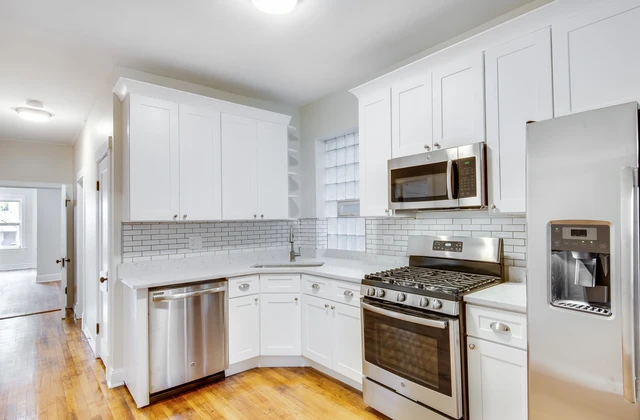Disclaimer: As an Amazon Associate, I earn commission from qualifying purchases.
Imagine this: You’ve finally decided to renovate your kitchen, dreaming of a space that’s both functional and aesthetically pleasing. But as you dive into the details, one question looms large: How much does it cost to install a kitchen? With over a decade of experience in home renovation and kitchen design, I’ve seen firsthand how understanding these costs can make or break a project. Let’s delve into the financial aspects of kitchen installation, ensuring you’re well-prepared for this significant investment.
Factors Affecting the Cost of Kitchen Installation
Several key factors influence the cost of kitchen installation, each playing a crucial role in determining the final budget. These include kitchen size, materials, labor, appliances, and custom features. According to industry statistics, the average kitchen remodel can range from $15,000 to $40,000, with high-end projects reaching $60,000 or more. Let’s explore these factors in detail.
Kitchen Size
The size of your kitchen is a primary determinant of cost. Larger kitchens require more materials and labor, driving up the overall expense. For instance, a 10×10-foot kitchen will cost significantly less to renovate than a 20×20-foot space.
Materials
The choice of materials greatly affects the budget. High-end materials like custom cabinets and quartz countertops can significantly increase costs compared to stock cabinets and laminate countertops.
Labor
Labor costs vary widely based on location and the complexity of the project. Hiring experienced contractors ensures quality work but comes at a premium. DIY projects can save money but require significant time and skill.
Appliances
Appliances can range from budget-friendly to luxury. High-end appliances not only enhance functionality but also add to the overall aesthetic appeal, albeit at a higher cost.
Custom Features
Custom features such as built-in wine racks or specialized lighting can elevate your kitchen’s appeal but also increase the budget. These features often require specialized labor and materials.
Breakdown of Kitchen Installation Costs
To better understand the cost breakdown, let’s look at the individual components of a kitchen installation:
Cabinets
Cabinets are a major expense, typically accounting for 30-40% of the total cost. Stock cabinets are the most affordable, while semi-custom and custom cabinets offer more flexibility and quality but at a higher price.
Countertops
Countertops vary widely in cost. Laminate is the most budget-friendly option, while materials like granite and quartz offer durability and aesthetic appeal at a higher cost. Tile and solid surface materials fall in between.
Flooring
Flooring options range from vinyl and laminate to hardwood and tile. Vinyl is the most affordable, while hardwood and tile provide longevity and elegance at a premium.
Lighting
Lighting is essential for both functionality and ambiance. Recessed lighting, under-cabinet lighting, and pendant fixtures are popular choices, each with varying costs based on type and quality.
Appliances
Appliances such as ranges, refrigerators, dishwashers, and microwaves are crucial components. Energy-efficient models can save on utility costs in the long run but may have higher upfront costs.
Cost of Labor for Kitchen Installation
The cost of labor is a significant part of the overall budget. Professional contractors bring expertise and efficiency but at a higher cost compared to DIY projects. Let’s compare the two:
Professional Contractors
Hiring professional contractors ensures high-quality work and adherence to timelines. The average labor rate for kitchen installation ranges from $50 to $150 per hour, depending on the complexity of the project and location. Professional contractors also handle permits, inspections, and warranties, providing peace of mind.
DIY Installation
DIY projects can save significantly on labor costs but require considerable time, skill, and tools. Homeowners undertaking DIY projects must also manage permits and inspections, which can be challenging. While DIY can be cost-effective, it’s essential to consider the potential risks and additional time required.
Material Costs for Kitchen Installation
The choice of materials significantly impacts the overall cost. Here’s a detailed look at the costs of different materials:
Cabinets
Stock cabinets are the most affordable, ranging from $50 to $200 per linear foot. Semi-custom cabinets offer more customization options and range from $100 to $650 per linear foot. Custom cabinets provide the highest quality and flexibility but come at a premium, starting from $500 to $1,200 per linear foot.
Countertops
Laminate countertops are budget-friendly, costing between $20 to $50 per square foot. Tile countertops offer a mid-range option, priced between $30 to $75 per square foot. Solid surface materials like Corian range from $40 to $100 per square foot. High-end materials like granite and quartz provide durability and elegance, costing between $50 to $200 per square foot.
Flooring
Vinyl flooring is the most affordable, ranging from $2 to $5 per square foot. Laminate flooring offers a mid-range option, costing between $4 to $15 per square foot. Hardwood and tile provide longevity and elegance but come at a higher cost, ranging from $6 to $20 per square foot for hardwood and $5 to $20 per square foot for tile.
Appliance Costs for Kitchen Installation
Essential kitchen appliances vary widely in cost and functionality. Here’s an overview of popular appliances and their costs:
Ranges
Electric ranges are the most affordable, starting from $300 to $1,000. Gas ranges offer more control and range from $400 to $2,000. High-end models with advanced features can cost upwards of $3,000.
Refrigerators
Basic refrigerators start from $500 to $1,000. Mid-range models with additional features like ice makers and smart technology range from $1,000 to $2,000. High-end models with advanced features and energy efficiency can cost upwards of $3,000.
Dishwashers
Budget-friendly dishwashers start from $250 to $500. Mid-range models with additional features like quiet operation and energy efficiency range from $500 to $1,000. High-end models with advanced features and customization options can cost upwards of $1,500.
Microwaves
Basic microwaves start from $100 to $200. Mid-range models with additional features like convection cooking and sensor technology range from $200 to $500. High-end models with advanced features and customization options can cost upwards of $700.
Additional Costs to Consider
Beyond the primary expenses, there are additional costs that homeowners often overlook. These include permits, electrical work, plumbing, and demolition:
Permits
Building permits are necessary for most kitchen renovations and can cost between $50 to $2,000, depending on the scope of the project and local regulations.
Electrical Work
Electrical work, including wiring and outlet installation, can range from $50 to $100 per hour. Complex projects may require additional costs for materials and specialized labor.
Plumbing
Plumbing work, including pipe installation and fixture replacement, can range from $45 to $200 per hour. Complex projects may require additional costs for materials and specialized labor.
Demolition
Demolition costs vary based on the scope of the project. Basic demolition can range from $500 to $2,000, while complex projects with hazardous material removal can cost significantly more.
Budget-Friendly Kitchen Installation Tips
Reducing costs without compromising quality is possible with strategic planning. Here are some actionable tips:
Choose Stock Cabinets
Opting for stock cabinets can save significantly compared to semi-custom or custom options. Stock cabinets are readily available and more affordable.
Use Laminate Flooring
Laminate flooring offers durability and aesthetic appeal at a lower cost compared to hardwood or tile. It’s also easier to install, making it a DIY-friendly option.
Opt for Energy-Efficient Appliances
Energy-efficient appliances can save on utility costs in the long run. Look for models with the ENERGY STAR rating to ensure efficiency and cost savings.
Consider Refurbished or Used Appliances
Refurbished or used appliances can be a cost-effective alternative to new models. Ensure they are in good working condition and come with a warranty.
Do Some Work Yourself
Taking on some tasks yourself, such as painting or basic installation, can save on labor costs. Ensure you have the necessary skills and tools before undertaking DIY projects.
High-End Kitchen Installation Options
For those looking to invest in a luxury kitchen, high-end options offer premium quality and functionality. Let’s explore these options:
Custom Cabinetry
Custom cabinetry provides unmatched quality and customization. These cabinets are built to specification, offering unique designs and high-end materials. However, they come at a premium cost.
High-End Appliances
High-end appliances offer advanced features, energy efficiency, and customization options. These appliances not only enhance functionality but also add to the overall aesthetic appeal. However, they come with a higher upfront cost.
Luxury Materials
Luxury materials like marble, high-end quartz, and exotic hardwoods provide unmatched elegance and durability. These materials are sourced from premium suppliers and come with a higher cost.
Sustainable Kitchen Installation Practices
Incorporating sustainable practices in kitchen installation is increasingly important. Here are some eco-friendly options:
Recycled Materials
Using recycled materials for countertops, cabinets, and flooring reduces environmental impact. These materials are sourced from recycled glass, metal, and plastic.
Energy-Efficient Appliances
Energy-efficient appliances reduce energy consumption and lower utility costs. Look for models with the ENERGY STAR rating to ensure efficiency.
Sustainable Flooring
Sustainable flooring options include bamboo, cork, and reclaimed wood. These materials are eco-friendly and provide durability and aesthetic appeal.
Planning and Timeline for Kitchen Installation
A well-planned timeline is crucial for a successful kitchen installation. Here’s a step-by-step guide:
Planning and Design
The planning and design phase involves creating a detailed plan, including layout, materials, and appliances. This phase can take 2 to 4 weeks, depending on the complexity of the project.
Demolition and Preparation
Demolition and preparation involve removing old cabinets, countertops, and appliances. This phase can take 1 to 2 weeks, depending on the scope of the project.
Installation
The installation phase involves installing new cabinets, countertops, flooring, and appliances. This phase can take 4 to 8 weeks, depending on the complexity of the project.
Finishing Touches
The finishing touches phase involves final adjustments, cleaning, and inspections. This phase can take 1 to 2 weeks, depending on the scope of the project.
Frequently Asked Questions (FAQs)
What is the average cost to install a kitchen?
The average cost to install a kitchen ranges from $15,000 to $40,000, with high-end projects reaching $60,000 or more. Factors influencing the cost include kitchen size, materials, labor, appliances, and custom features.
How can I save money on kitchen installation?
To save money on kitchen installation, consider opting for stock cabinets, using laminate flooring, and choosing energy-efficient appliances. DIY projects can also save on labor costs, but ensure you have the necessary skills and tools.
What are the most expensive parts of a kitchen installation?
The most expensive parts of a kitchen installation include cabinets, countertops, and high-end appliances. These components account for a significant portion of the overall budget due to their quality and customization options.
Should I hire a professional or do it myself?
Hiring a professional ensures high-quality work and adherence to timelines but comes at a higher cost. DIY projects can save on labor costs but require significant time, skill, and tools. Consider the complexity of the project and your comfort level before deciding.
How long does a typical kitchen installation take?
A typical kitchen installation can take 6 to 12 weeks, depending on the complexity of the project. Factors affecting the timeline include planning and design, demolition and preparation, installation, and finishing touches.
Can I install a kitchen without permits?
Most kitchen renovations require permits to ensure compliance with local building codes and safety standards. Failing to obtain necessary permits can result in fines and legal issues. Always check local regulations and obtain the required permits before starting the project.
Conclusion
Installing a kitchen is a significant investment that requires careful planning and budgeting. Understanding the factors that influence the cost, breaking down individual expenses, and considering additional costs can help you make informed decisions. Whether you opt for budget-friendly solutions or high-end options, the key is to plan meticulously and stay within your budget.
By following the guidelines and tips outlined, you can achieve a functional and aesthetically pleasing kitchen that meets your needs and enhances your home’s value.







